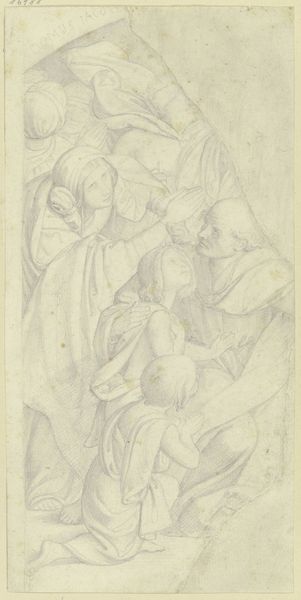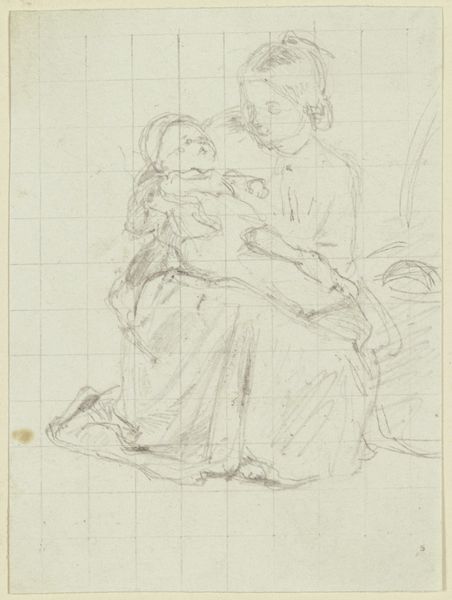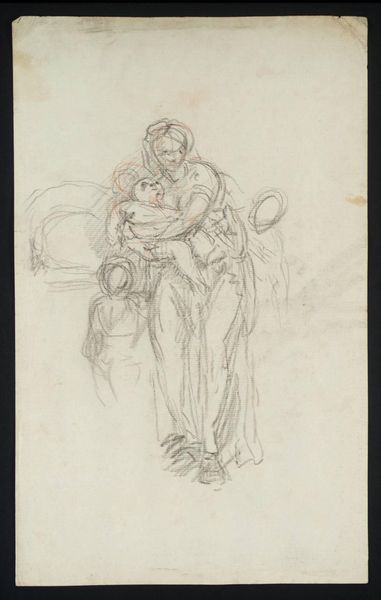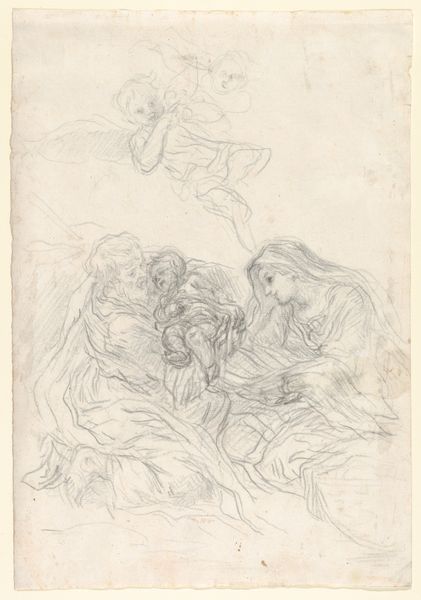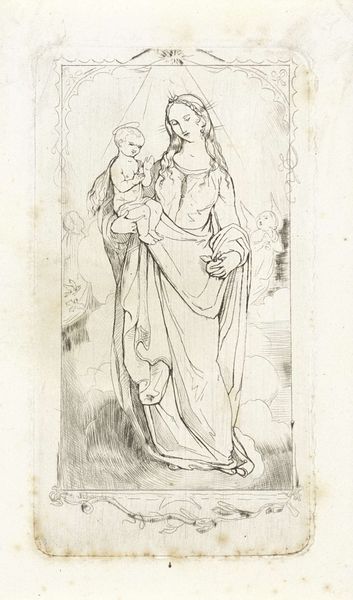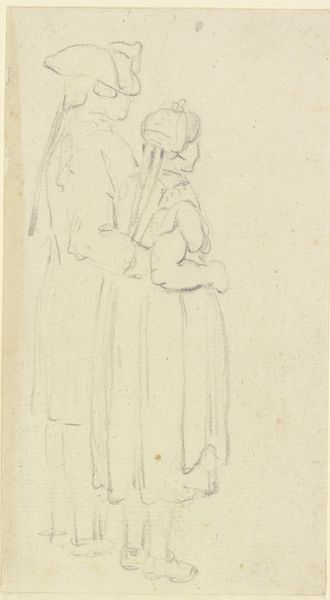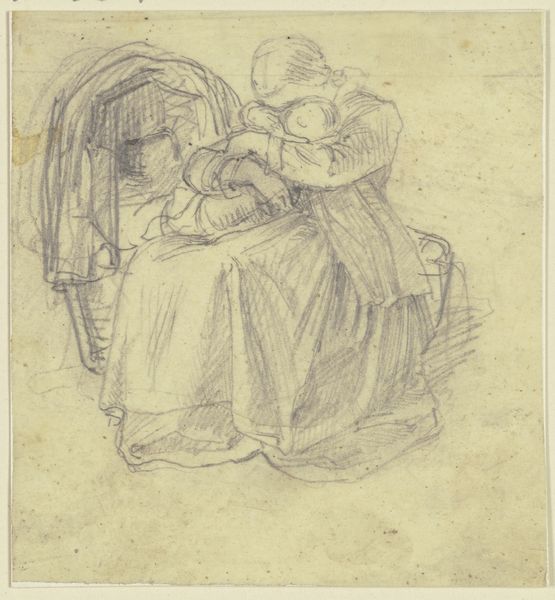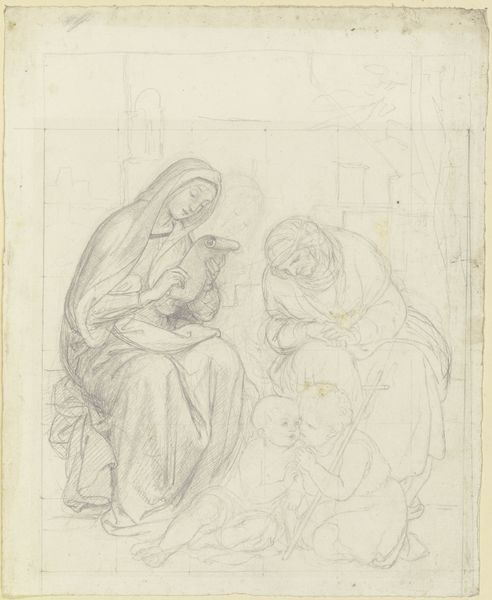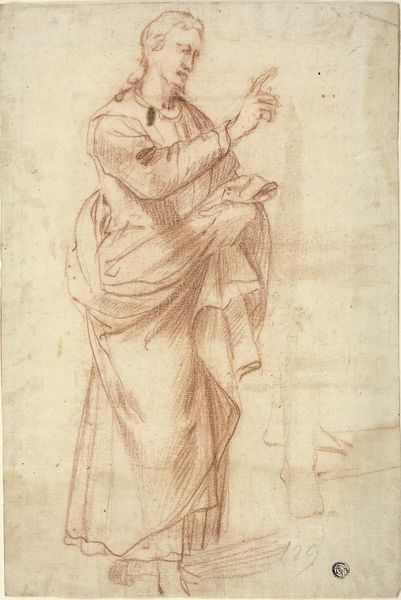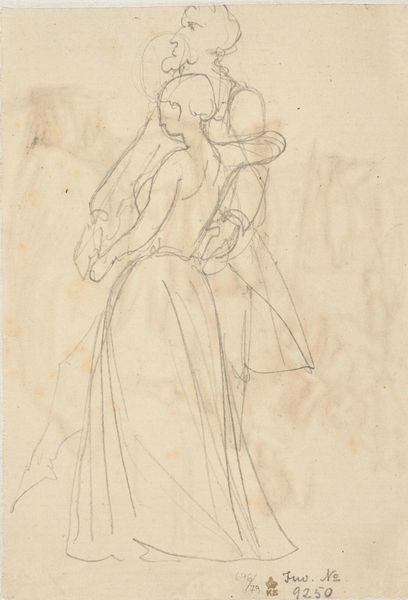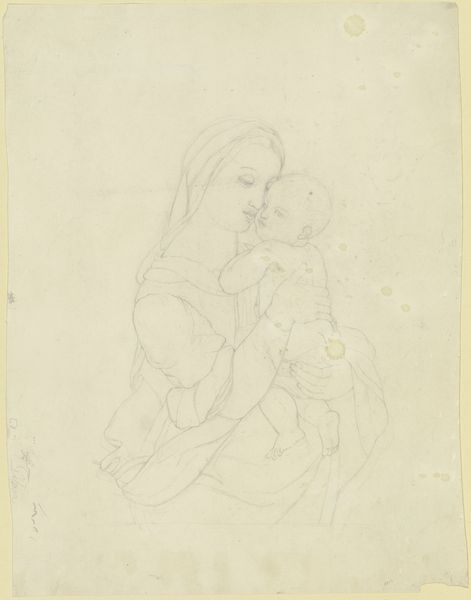
drawing, pencil
#
portrait
#
drawing
#
16_19th-century
#
pencil sketch
#
11_renaissance
#
german
#
pencil
#
history-painting
Copyright: Public Domain
Editor: We’re looking at a drawing by Philipp Veit from the mid-19th century, entitled "Standing Madonna with Infant Jesus and John the Baptist Boy." It's rendered in pencil, and the lightness of the sketch gives it such a tender, ephemeral quality. What draws your eye in this piece? Curator: That lightness, that sense of something just barely there, is key. It feels like a fleeting vision, doesn't it? Like a dream you’re trying to grasp before it fades. And that tender quality, yes, absolutely. Veit's part of that 19th-century Nazarene movement, aiming to revive spiritual honesty in art, like a whispered prayer on paper. Do you see how the lines are soft, almost tentative? Editor: I do. It's like he's discovering the figures as he draws them. They are both real and symbolic. Curator: Exactly! This isn’t just a literal depiction; it's an attempt to capture the essence of maternal love, divine innocence. Veit's imbuing these figures with a deep well of feeling, stripping away any excess. The incompleteness becomes part of the power. Editor: So, it's almost like the lack of sharp details forces us to engage more actively with the image, filling in the gaps ourselves? Curator: Precisely! Our own understanding of tenderness, faith, motherhood—all of that comes into play. And look at the way John gazes up at Mary; there’s a connection being formed, a future hinted at. It's incredibly moving in its simplicity. Editor: I see that now. I came in thinking it was just a sketch, but now I feel its emotional weight. It’s not just the drawing, but also the anticipation it creates in the viewer's mind. Curator: It's a dance between what Veit offers and what we bring to it. And that, for me, is where the true magic lies. It is lovely to see those spiritual ties rendered in such delicate lines.
Comments
No comments
Be the first to comment and join the conversation on the ultimate creative platform.
